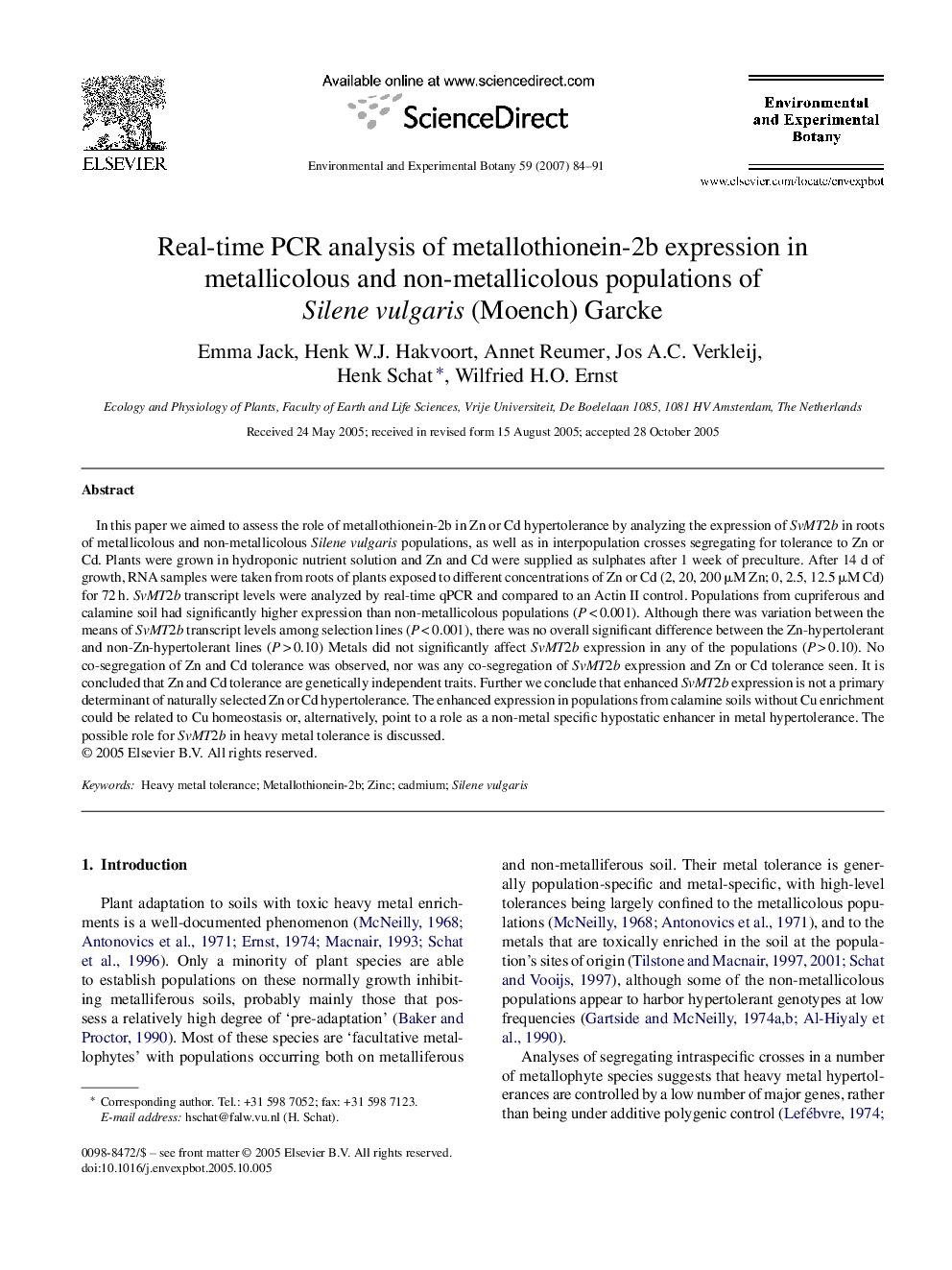| Article ID | Journal | Published Year | Pages | File Type |
|---|---|---|---|---|
| 4555529 | Environmental and Experimental Botany | 2007 | 8 Pages |
In this paper we aimed to assess the role of metallothionein-2b in Zn or Cd hypertolerance by analyzing the expression of SvMT2b in roots of metallicolous and non-metallicolous Silene vulgaris populations, as well as in interpopulation crosses segregating for tolerance to Zn or Cd. Plants were grown in hydroponic nutrient solution and Zn and Cd were supplied as sulphates after 1 week of preculture. After 14 d of growth, RNA samples were taken from roots of plants exposed to different concentrations of Zn or Cd (2, 20, 200 μM Zn; 0, 2.5, 12.5 μM Cd) for 72 h. SvMT2b transcript levels were analyzed by real-time qPCR and compared to an Actin II control. Populations from cupriferous and calamine soil had significantly higher expression than non-metallicolous populations (P < 0.001). Although there was variation between the means of SvMT2b transcript levels among selection lines (P < 0.001), there was no overall significant difference between the Zn-hypertolerant and non-Zn-hypertolerant lines (P > 0.10) Metals did not significantly affect SvMT2b expression in any of the populations (P > 0.10). No co-segregation of Zn and Cd tolerance was observed, nor was any co-segregation of SvMT2b expression and Zn or Cd tolerance seen. It is concluded that Zn and Cd tolerance are genetically independent traits. Further we conclude that enhanced SvMT2b expression is not a primary determinant of naturally selected Zn or Cd hypertolerance. The enhanced expression in populations from calamine soils without Cu enrichment could be related to Cu homeostasis or, alternatively, point to a role as a non-metal specific hypostatic enhancer in metal hypertolerance. The possible role for SvMT2b in heavy metal tolerance is discussed.
